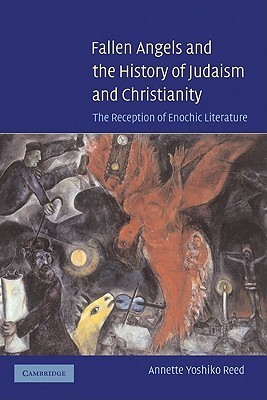What do you think?
Rate this book


336 pages, Hardcover
First published December 31, 2001
Justin's understanding of these Enochic traditions, however, is informed by an innovative interpretation of the identity of the fallen angels and their sons. Reading the Book of Watchers' association between the spirits of the Giants and present-day demons through LXX Ps 95:5 ("all the gods of the nations are daimones"), Justin asserts that these figures are the very gods celebrated in Greek myths and worshipped by the Romans who ironically persecute Christians for their alleged atheism and impiety.
By equating fallen angels and demons with the pagan pantheon, Justin is able simultaneously to explain and to undermine Greco-Roman traditions about the gods by reading them through the lens of Enochic traditions about the Watchers (Reed 2005:164-165).
Justin not only recast the angelic descent myth to speak to the situation of Christian persecution, but he did so in terms that rendered it accessible to accessible to an audience of former pagans. He cites the Greek myths much as he uses the Jewish scriptures, claiming that the truth therein can only be exposed by a certain mode of reading. Just as his anti-Judaism is founded on the inversion of the Deuteronomistic approach to biblical history, so he offers a distinctively Christian variation on the euhemeristic and allegorical interpretation of Greek myths by learned Greeks and Romans: the tales about the impious deeds of gods and sons of gods actually attest the activities of the fallen angels and demons, and the legends about their divine deeds are really fictions that the demons invented about themselves in a petty imitation of the true prophecies about Christ.
Much the same can be said of Justin's approach to Greco-Roman religion: pagans already acknowledge the role that daimones play in the cosmos; what he tells them is that all daimones are evil (i.e. "demons" as in the Jewish and Christian understanding of this Greek term). Likewise, his denunciation of pagan sacrifice and idolatry echoes Greco-Roman philosophical critiques of popular religion, and his assertion of the fallen angels' role in transmitting corrupting skills and knowledge grounds its plausibility in myths about divine and semi-divine culture-heroes. When read through the lens of Justin's historiographical and demonological approach to the history of human culture, his retelling of the angelic descent myth resonates with the cultural expectations of Gentile Christians, even as it serves to confirm their choice to reject their pagan past -- a choice here elevated to the level of a decision to free themselves from demonic enslavement and ally themselves with Christ in the cosmic battle against evil (Reed 2005:186).